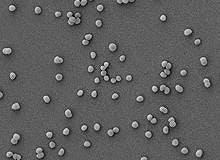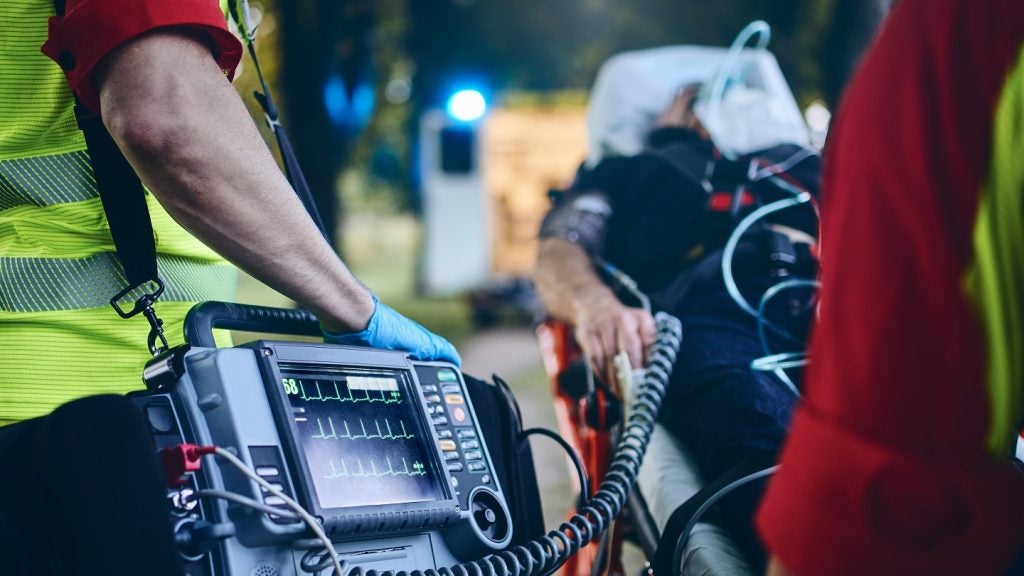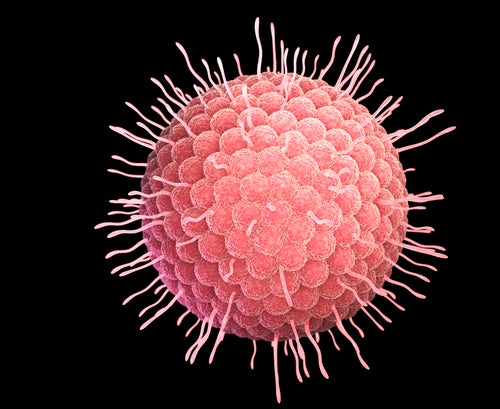
The battle against MRSA has suffered several setbacks in recent years. Despite increased efforts to find an antibiotic to treat the methicillin-resistant Staphilococcus aureus (MRSA), infection numbers have constantly gone up.
In the US, the overall number of people developing a serious and invasive infection from this ‘superbug’ reached 94,360 in 2005, according to a study from the Centers for Disease Control and Prevention, released in 2007. 18,650 persons died during hospital stays related to these infections in the same year.
In the UK, MRSA causes around 7,000 infections every year, with potentially 10-20 times that number of unreported cases. The mortality rate settles at around 25% of the reported infections. In 2008-2009, however, the number of deaths involving MRSA fell by 37% from 1,230 to 781, according to the Office for National Statistics (ONS).
Hospitals on the frontline
The reason for these high numbers is the bacterium’s ability to develop resistances against antibiotics due to mutations or the acquisition of resistance genes. "MRSA has had a lot of time to become resistant to the antibiotics we use," says MRSA expert at St George’s University of London Centre for Infection in the UK, Jodi A. Lindsay. "MRSA is a subgroup of Staphylococcus aureus and 25% of all people are normally colonised with S. aureus. Since patients receive antibiotics for a wide range of infections or for prophylaxis, the selective pressure for colonising bacteria to develop antibiotic resistance is high."
As the bacteria are most likely to infect those who are already ill, such as people living with HIV/Aids, cancer patients, transplant recipients or any other person being treated for a medical problem, hospitals are often on the frontline of the fight against MRSA. According to the official data from the Centers for Disease Control and Prevention, about 85% of all invasive MRSA infections in 2005 were associated with healthcare.
See Also:
"The reservoir of MRSA is the human host," explains Jodi A. Lindsay. "No matter how clean hospitals are, humans will contaminate them. The major source of infecting isolates of MRSA is the patient’s own flora."
How well do you really know your competitors?
Access the most comprehensive Company Profiles on the market, powered by GlobalData. Save hours of research. Gain competitive edge.

Thank you!
Your download email will arrive shortly
Not ready to buy yet? Download a free sample
We are confident about the unique quality of our Company Profiles. However, we want you to make the most beneficial decision for your business, so we offer a free sample that you can download by submitting the below form
By GlobalDataHowever, a group of French hospitals has reduced the bacteria’s burden among patients by more than a third after a 15-year-long multi-prong control program, according to a report published in March 2010 in the Archives of Internal Medicine magazine. Thirty-eight teaching hospitals, run by Assistance Publique Hôpitaux de Paris (AP-HP), launched the program in 1993 as a response to the fact that in the 1980s 35% of all cultured strains of S. aureus in France were MRSA.
The research focused on simple measures aimed at decreasing cross-transmission, such as single room placement, promotion of hand hygiene, active surveillance in high-risk patients, quick notification and feedback. Besides this, the AP-HP did not implement any broad changes in their antibiotic prescription rates.
The findings, based on observational data from 1993-2007, were a major research success. They showed a 44% drop of surgical ward MRSA infection, a 32% drop in general medical wards and went down by 59% in intensive care units (ICUs).
Developing a ‘superdrug’
For the University of Rochester Medical Center in New York, US, however, these plain and simple measures are not enough. Edward M. Schwarz and his research team have been trying to find a vaccine to prevent life-threatening MRSA infections, especially when following bone and joint surgery, for seven years.
In January 2011, they published their findings, having developed antibodies against a protein belonging to MRSA. The antibodies interfere with the bacteria’s growth and are "attractive candidates" for a potential vaccine to prevent MRSA infection, according to the researchers.
"I do not believe in vaccines that target bacterial adhesions, because of their extensive redundancy, nor do I believe in biofilm, which is already too late in the infection process," says research leader Edward M Schwarz. But he also admits that he does not expect to develop a vaccine that successfully eradicates MRSA infections.
The vaccine, which is really a passive immunisation in which the patient receives an intravenous infusion of a monoclonal antibody, is directed against the critical glucosaminidase enzyme that the bacteria cannot grow without. "The enzyme acts as a zipper to open the impenetrable cell wall of the bacteria during binary fission," explains Schwarz.
The antibody then has three different mechanisms: first the opsonisation to facilitate clearance by phagocytic cells (cells that ingest microorganisms and foreign particles). This is the primary mechanism for all current MRSA vaccines. The second mechanism involves the inhibition of MRSA growth, which the researchers have demonstrated in-vitro and in-vivo. The last one is the MRSA lysis via complement fixation proximal to periplasm that has been exposed by autolysin digestion of the cell wall. The work on the latter is still ongoing.
To put it simply: "Washing hands prior to surgery is the greatest intervention towards reducing infection that there is. This passive immunisation is another layer of hand washing."
According to Schwarz the antibody is expected to significantly lower the number of microbes that are liberated during surgery and prevents them from colonising the cells. "Currently, MRSA wins about 50% of the time. If the passive immunisation reduces that down to around 35% it would be considered a major breakthrough."
Suppressor of antibiotic resistance
A completely different approach has been pursued by the North Carolina State University’s Professor Christian Melander for the past seven years. He and his research team have developed a new compound, known as suppressor of antibiotic resistance (SPAR), which cracks drug-resistant codes in the body and detects what makes MRSA unresponsive to certain medications.
SPAR tears down the barriers put up by MRSA bacteria against particular antibiotics and allows medications and antibiotics to work properly. The team has developed the compound, which is based on a naturally occurring marine alkaloid, in Melander’s lab in Fayetteville. Up to now, it has been successful in in-vitro studies.
"The compound was not potent enough to take it to an animal trial," says Christian Melander. "So, what we’ve been doing in my lab is trying to improve the culture of the compound in-vitro, which we have gotten around in doing and we are making some good headway there."
The problem has been solved by the team and now the research is moving on to animal studies. A Department of Defense (DOD) grant of $2m will take the research to the next level and test the compound in various animal models for infectious disease where bacteria is multi-drug resistant, for the next two and a half years.
Need for more research
Whether Schwarz’ and Melander’s efforts signify the big breakthrough in the development of a successful ‘superdrug’ in the battle against MRSA or are only a drop in the ocean remains unknown as more work in both directions has yet to be done.
Experts agree upon the need for more research into a MRSA vaccine in general. The necessary money, however, is missing. Major funding cuts, as for example in the National Institutes of Health (NIH) budgets in the US, are under way.
The research that is being done has also been criticised by for its one-way direction. "My major criticism of the field is that the vaccines being developed are merely targeting surface antigens, rather than essential proteins," says Edward M. Schwarz. "A lot more needs to be done if an effective MRSA vaccine is to be developed."
Christian Melander, on the other hand, condemns some of the actions taken by the industry in the past. "The pharma industry thought that they had the bacteria defeated. No one thought that we were going to have this huge antibiotics resistance problem and clearly that was a mistake on many people’s parts."
"I think that we are finally getting around to realising that it’s a really big issue and I think a lot of people are now starting to put efforts towards it," he says. "If we’ve learned anything from bacteria it’s that they are going to figure something out against whatever we throw at them. It needs to be a battle that’s continuously fought and hopefully we will learn from our mistakes."






